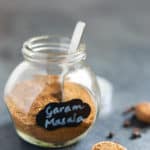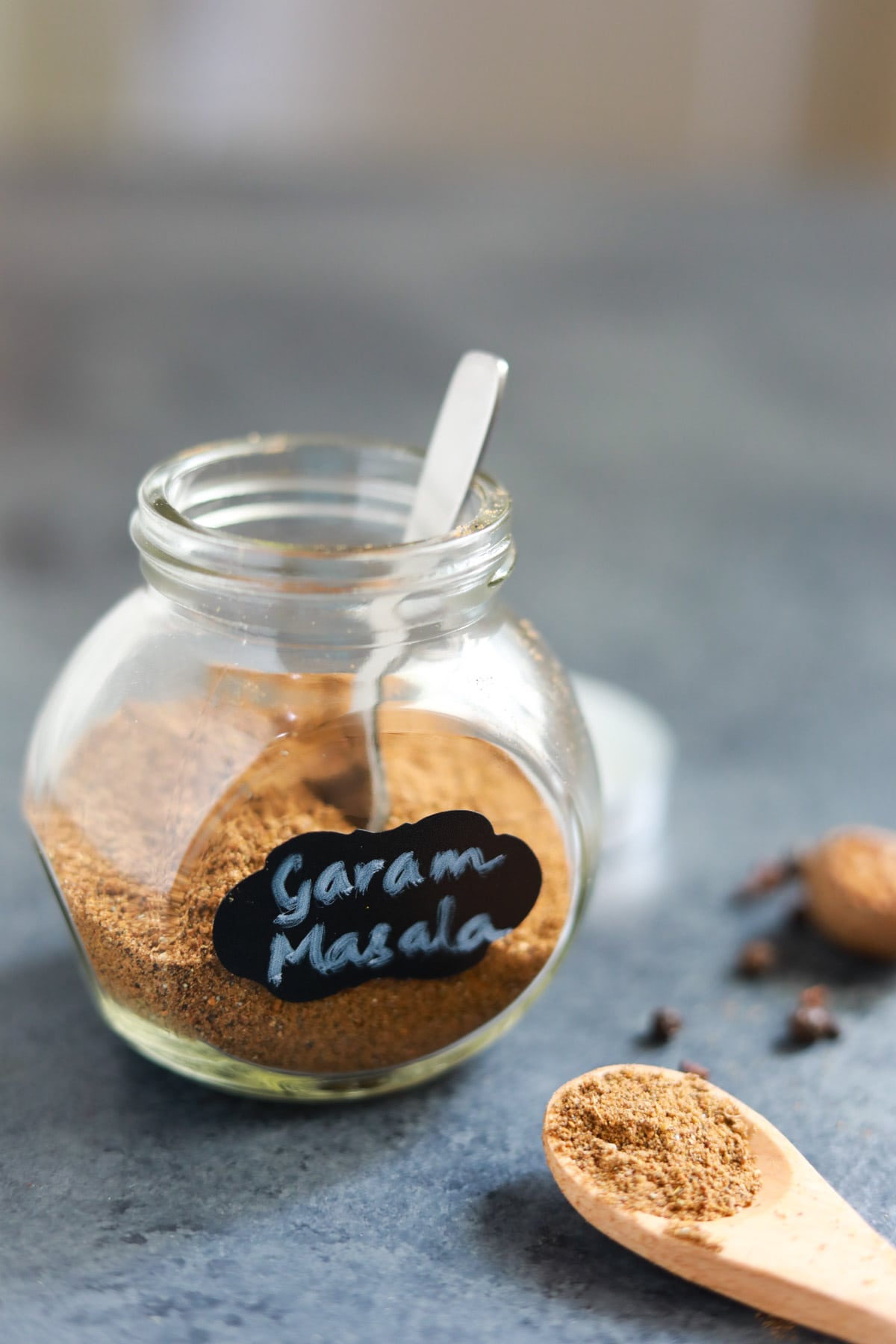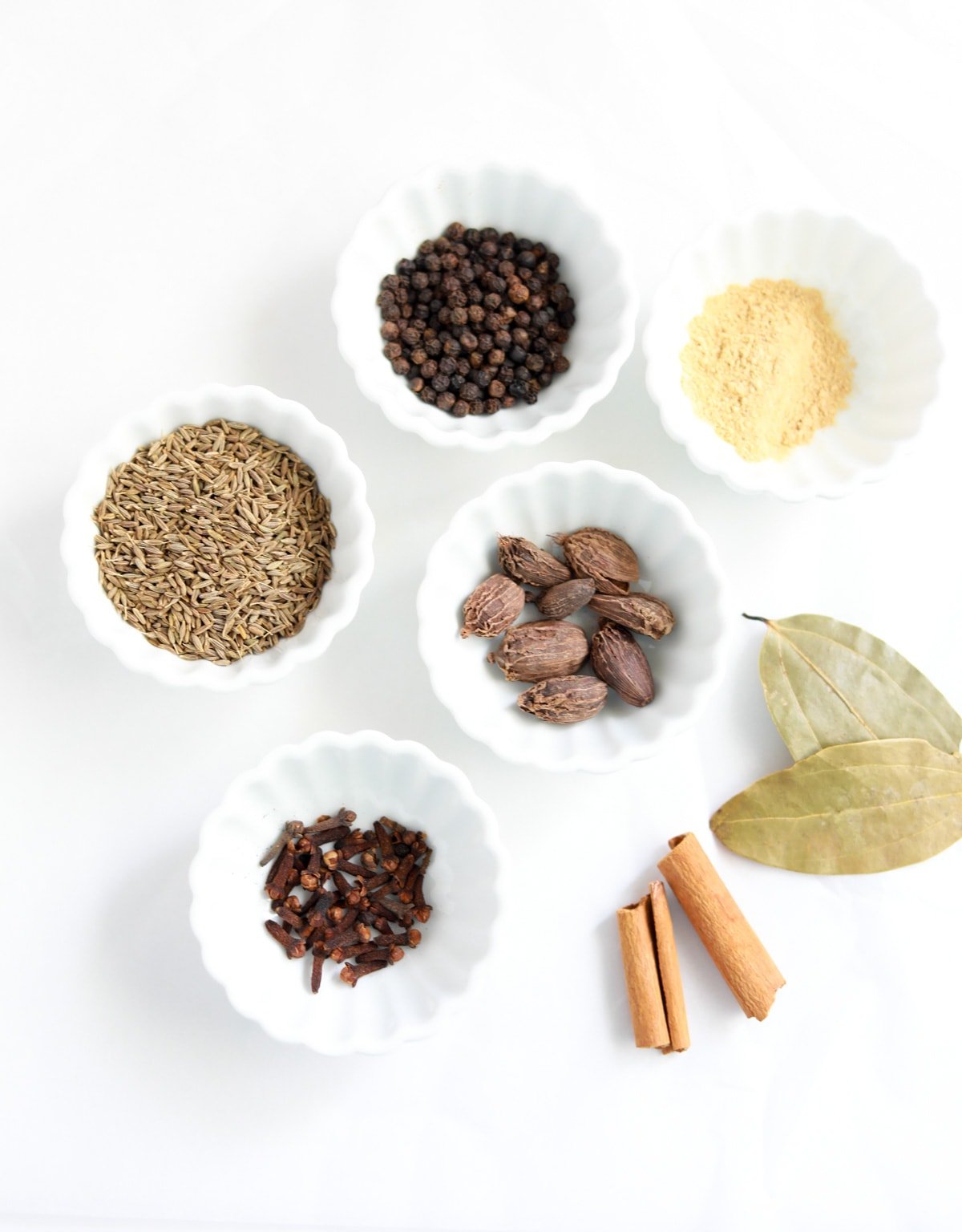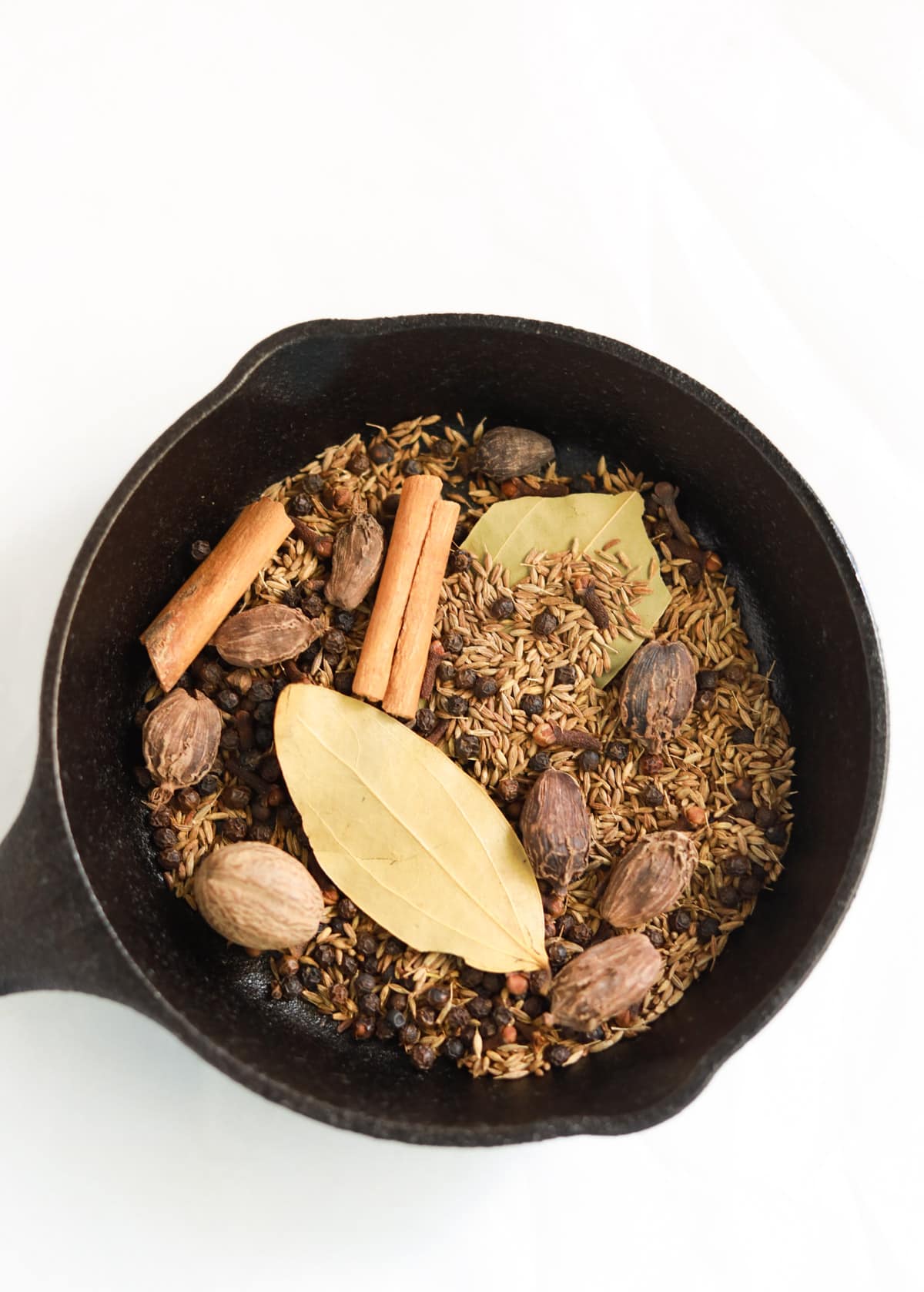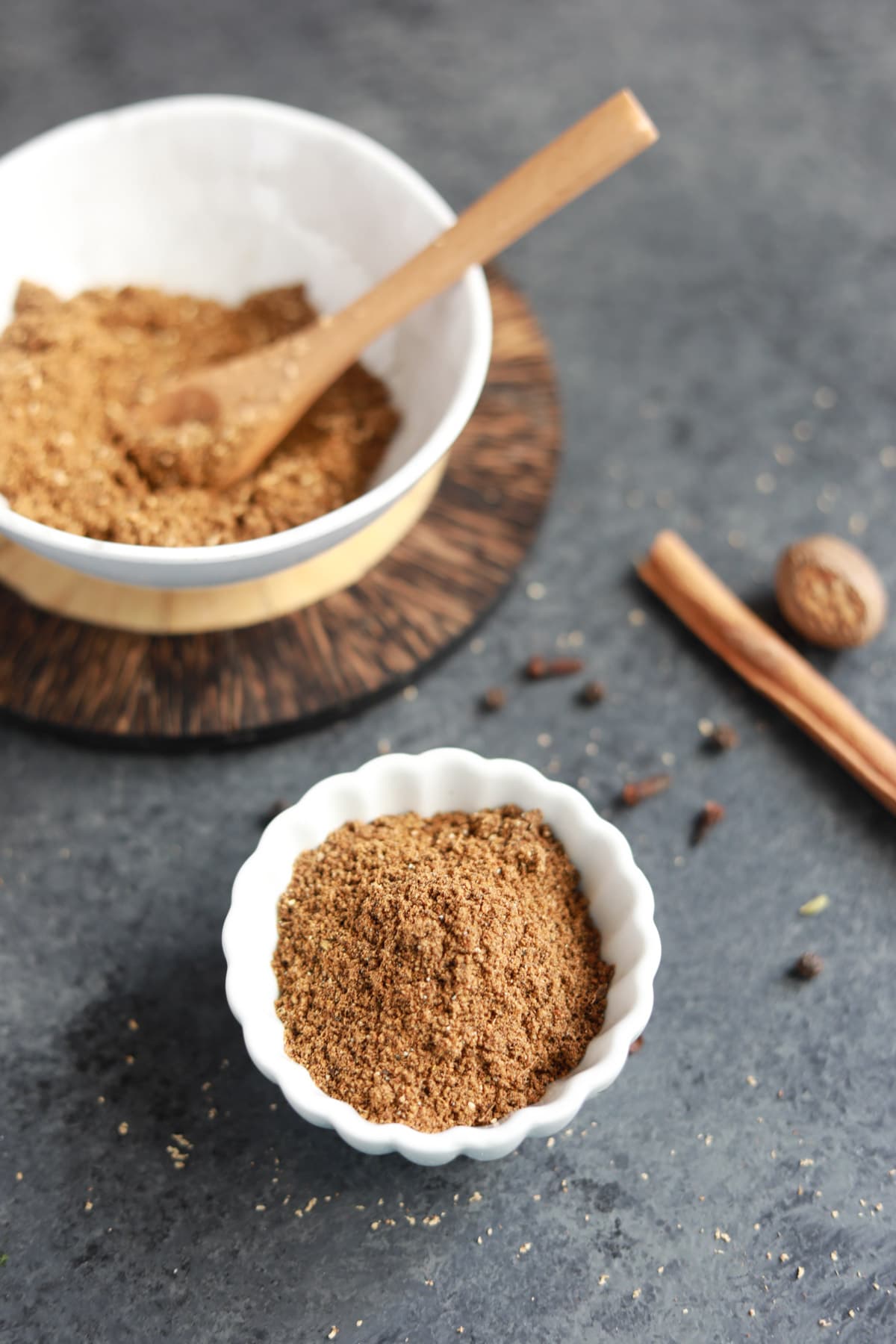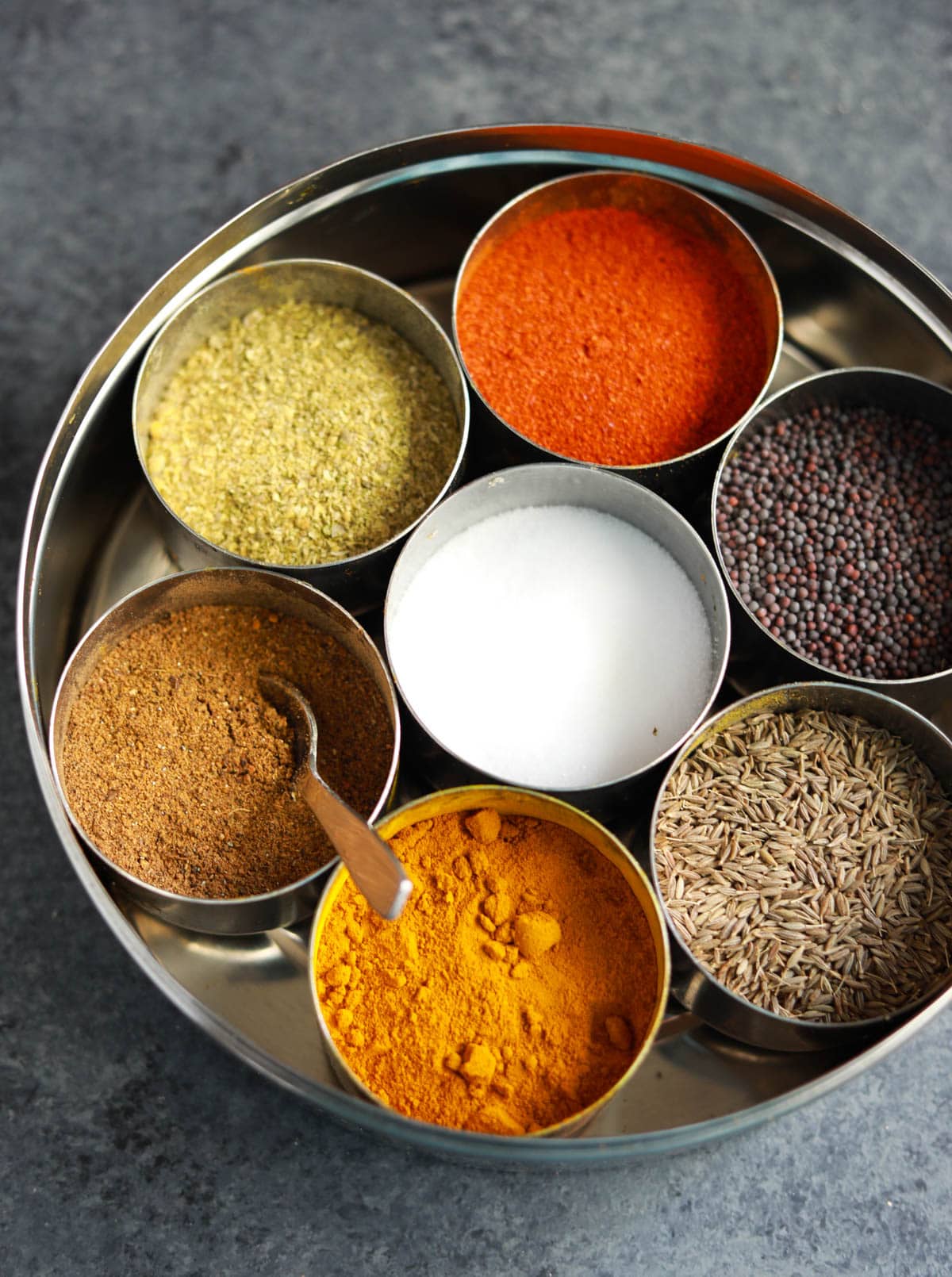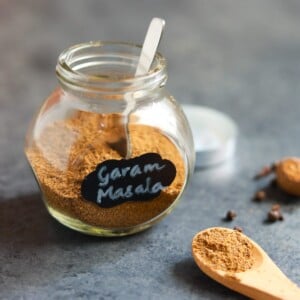I actually never had to make Garam Masala myself as my mom would always have a jar ready for me whenever I visited India, or she visited us in California. Now I think it is time I grow up and start making my own garam masala 😉 especially considering I have a food blog now and also a daughter to whom I want to pass on this recipe. So here is the recipe from my family, but adapted to make it simpler for everyday cooking. Frankly, there is no single recipe for Garam Masala similar to Chai Masala. You will find that every region and every family has their own traditional recipe for Garam Masala, which gets passed down from generation to generation. In some recipes, you will see I use whole spices, such as my mom’s chicken curry. While in many other recipes, I add ground Garam Masala. Indians are used to eating around the whole spices, but if you are worried about fishing out whole spices, then using this Garam Masala blend is a great way to add flavor to the dish. Garam Masala is a spice you can add to any curry, and it will add a wonderful fragrance right away!
What is Garam Masala?
In Hindi, Garam means “warm,” and Masala is basically a “blend of spices.” So Garam Masala translates to the warm spice blend. It is not “hot” in the sense that it does not include any red chilis to add heat. It has body-warming spices blended together. Garam Masala originates in North India, where there are colder seasons. So this warming spice blend helps and is definitely used much more on colder days. In Ayurvedic medicine, it is believed that the spices in garam masala warm the body. This means they help to improve metabolism. Other healing benefits of Garam Masala are helping with digestion, reducing inflammation, and boosting the immune system. Curious about Indian Spices? Check out my detailed guide for Indian Spices & Herbs.
What spices are in Garam Masala?
The basic recipe from my mom includes the below ingredients –
Cumin Seeds (Jeera) Black Peppercorns (Kali Mirch) Black Cardamom (Moti Elaichi) Whole Cloves (Laung) Cinnamon (Dalchini) Bay leaves (Tejpatta) Ginger powder Nutmeg
Some people add coriander seeds when making Garam Masala. However, typically coriander powder is added separately when cooking too. So we do not include it in the Punjabi Garam Masala recipe.
Do we need to toast whole spices to make Garam Masala?
You will see some recipes with whole spices toasted while others don’t. The main difference is that garam masala made with toasted spices can be added after a dish is cooked for a finishing touch as the spices are already cooked. While if garam masala is not made with toasted spices, then add it with other spices while cooking the dish. Most store-bought garam masala is not toasted, so do keep that in mind if you use them. But really, it is super easy to make at home, so skip buying the ready-made blend. I personally feel that toasting the spices and then grinding them to increases their aroma. Freshly made Garam Masala from whole spices gives the maximum flavor.
How to make Garam Masala Powder?
Heat a small skillet over medium-high heat. Once the pan is hot, add all the whole spices (except ginger powder and nutmeg). Toast the spices shaking the skillet every few seconds. Cumin will turn reddish brown, and bay leaves have become brittle. The mixture will also become fragrant. Transfer immediately to a bowl to cool. You don’t want the spices to overcook and burn. Once the spices are completely cooled, then transfer them to a spice/coffee grinder. Add the ginger powder and grind it to a powder. Grate ¼ tsp nutmeg and fold it in.
Meeta’s Tips for Best Garam Masala
Toast Spices: Toast the spices well until they are fragrant. Keep stirring frequently, as you don’t want the spices to burn. Let them cool: It is important to let the spices cool completely before grinding; otherwise, they will have moisture, and the garam masala can spoil soon. Grinding Spices: Use a good spice or coffee grinder to grind the spices to a smooth consistency. I have been using the Secura spice grinder, which has worked well for years to grind spices. I have also used Vitamix to grind large quantities of spices, which works well. You can also use a mortar and pestle to grind garam masala in small quantities. Of course, it will take longer, but it works if you do not have a grinder. Cardamom: If you don’t have black cardamom, replacing it with green cardamom pods is okay. Use the seeds and skin of the cardamom as they add flavor to the garam masala spice blend.
Curry Powder v/s Garam Masala
You may be surprised to learn that curry powder is not a spice used in Indian homes. I read that it is a British invention. Curry powder is also a spice blend. However, one of the main differences between these two spice blends is that curry powder is used by many (not in India) as a cooking ingredient to add flavor. Curry powder has turmeric as a main ingredient, giving it a golden, yellowish color. Garam masala is deeper in color (dark brown), sweeter in taste, and warmer. This is due to the addition of cinnamon, nutmeg, cardamom, cloves, and black peppercorns. Curry powder and Garam Masala are NOT interchangeable in a recipe.
Where to buy spices to make Garam Masala?
You will find the spices to make Garam Masala at any local Indian grocery store (and they are most likely fresh and cheaper). If you can’t find a local Indian grocery, then any chain store such as Sprouts or Whole Foods would have them too.
How to store Garam Masala?
Garam Masala can be stored in an air-tight container in a cool area away from direct light. Even though Garam Masala will not spoil even if kept for six months. Make fresh Garam Masala every 2-4 weeks so it remains fragrant. Here is my spice box, where I keep spices for everyday use. For most of them, I also have a jar full of spice to refill this box as needed.
What is a good Garam Masala Substitute?
As I mentioned above, Garam Masala is something that has a different recipe in each region and even family. So I suggest you can make Garam Masala with the ingredients you have on hand. If you are making an Indian dish and missing the blend, then look at the spices included and add small quantities of the ones used to make garam masala. Try varying your garam masala recipe to find the spice combination of your preference. Here you can find more options for Garam Masala Substitutes.
Where to buy Garam Masala?
Although I highly recommend making Garam Masala at home (it is so easy to make!), you can also find it at many grocery stores. I would suggest looking for one that does not include a ton of spices. The main basic ingredients are what give the most flavor.
Cooking with Garam Masala
In my recipes, I often add Garam Masala along with other spices. This is to make the recipe easier and not have to spread out adding spices. That said, as I toast the spices to make Garam Masala, it is a great addition after cooking a curry. The flavor of the warm spices is more pronounced when added at the end. Other ground spices I like making at home are roasted cumin powder and coriander powder. They are some of the most used at our house, and the flavors from freshly ground spices are amazing! If you are curious about other ingredients used in Indian cooking, check out my post about curry leaves and green chili peppers. Here are some recipes where I use this garam masala. You can find many more recipes using garam masala here:
Rajma Masala Palak Paneer Tandoori Chicken Keema Matar Vegetable Korma
